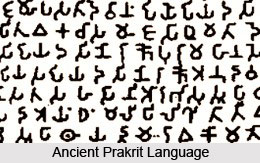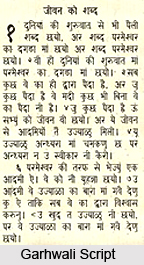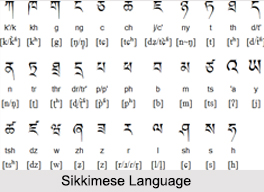 Angika, also known as Anga and Angikar, is an Eastern Indo-Aryan language that finds its roots in the Indian states of Bihar and Jharkhand, as well as certain parts of Nepal. Regarded as the oldest language of the Bengali family, Angika holds a significant place in linguistic history. With its resemblance to Maithili and other Indo-Aryan languages such as Bengali, Assamese, Oriya, Bhojpuri, and Magahi, Angika showcases a unique linguistic heritage.
Angika, also known as Anga and Angikar, is an Eastern Indo-Aryan language that finds its roots in the Indian states of Bihar and Jharkhand, as well as certain parts of Nepal. Regarded as the oldest language of the Bengali family, Angika holds a significant place in linguistic history. With its resemblance to Maithili and other Indo-Aryan languages such as Bengali, Assamese, Oriya, Bhojpuri, and Magahi, Angika showcases a unique linguistic heritage.
Origin and Linguistic Connections of Angika Language
Angika Language, considered the oldest language of the Bengali family, shares a close affinity with Maithili. Historically, it was written in a distinct script known as `Anga Lipi.` However, over time, writers shifted to the Kaithi Script and eventually adopted the Devanagari Script for written communication. Verbs in Angika bear similarities to Bengali, further highlighting the linguistic relationship between the two languages. For example, "dangaybey" in Angika is equivalent to "daangabay" in Bengali, while "kanay chhai" in Angika aligns with "kaanchey" in Bengali. Additionally, Angika, Maithili, Assamese, Bengali, and Oriya are regarded as sister languages, sharing common features and linguistic traits. It is written in the Devanagari script, with several alternate names such as Aangi, Angikar, Chheka-Chhiki, Chhai-chhow, Bhagalpuri, and Chekari.
Geographical Distribution of Angika Language
Angika is predominantly spoken in the Anga region of northern India, primarily in the districts of Munger, Bhagalpur, and Banka in Bihar state. It also finds its presence in the Santhal Pargana division of Jharkhand state. Additionally, Angika is spoken in the Morang and Sunsari districts of Province No. 1 in eastern Nepal. According to the 1997 census, there were approximately 725,000 Angika speakers in India, while Nepal recorded 20,330 speakers in 2011. Apart from the native regions, a significant Angika-speaking population has settled in cities like Mumbai, Delhi, Kolkata, Vadodara, Surat, Chandigarh, Ludhiana, Jamshedpur, and Bokaro.
Dialects and Variation of Angika Language
Angika exhibits a range of dialectal variations within its linguistic domain. Some of the notable dialects include Deshi, Dakhnaha, Mungeria, Devgharia, Gidhhoria, Surjapuri, Khortha, and Dharampuria. These variations add richness and diversity to the language, enabling regional nuances and unique expressions.
Relationship with Maithili
In the early 20th century, George Abraham Grierson classified Angika as a dialect of Maithili in the Linguistic Survey of India (1903). However, Angika speakers have since asserted its status as an independent language. When proponents of the Maithili language demanded the use of Maithili-medium primary education, the Angika-speaking region did not extend support and favored Hindi-medium education instead. During the 1960s and 1970s, when Maithili speakers called for a separate Mithila state, Angika and Bajjika speakers made counter-demands for recognition of their languages. While some Maithili proponents believe that Angika and Bajjika were promoted as distinct languages to weaken the Maithili language movement, there are still debates and disagreements regarding the classification of Angika.
Many individuals, particularly those from the Maithil Brahmin and Karan Kayasthas castes, have been staunch supporters of the Maithili movement, emphasizing its distinct identity. On the other hand, people from various other castes in the Mithila region have embraced Angika and Bajjika as their mother tongues, aiming to establish a separate regional identity away from the Maithili-based identity.
Official Status and Recognition of Angika Language
Despite its historical significance and widespread usage, Angika is not currently listed in the 8th schedule of the Constitution of India, which recognizes official languages. However, in 2018, Angika received the status of a "second state language" in the Indian state of Jharkhand, along with 15 other languages, including Maithili. This recognition provides some acknowledgement and support for the language within the region.
Angika Language stands as a testament to the linguistic diversity and rich heritage of the Eastern Indo-Aryan languages. As the oldest language of the Bengali family, it shares close ties with Maithili and exhibits resemblances to other Indo-Aryan languages. Despite its historical importance and cultural significance, the status of Angika has been a subject of contention, with proponents advocating for its recognition as an independent language. The geographical distribution of Angika spans across regions in Bihar, Jharkhand, and even Nepal, with a significant diaspora in major cities of India. The presence of multiple dialects adds further depth to the language and facilitates regional expressions. While Angika awaits formal recognition and inclusion in the constitutional framework, its speakers continue to cherish and preserve this linguistic gem, contributing to the linguistic diversity of the Indian subcontinent.



















